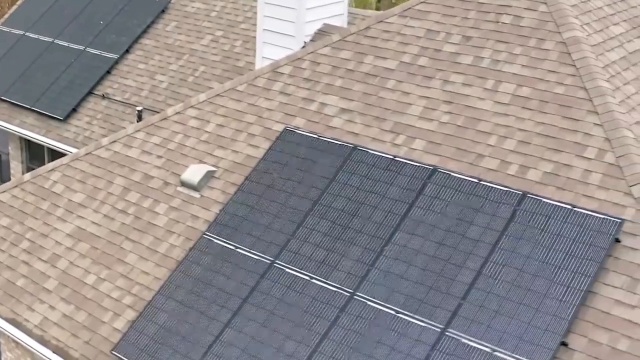
If you're interested in plumbing repair and building, you could consider a career of plumber, pipefitter or steamfitter. While the general economy has a fluctuating employment rate, there will be periods of low construction activity. The need for plumbing systems will not go away even if the economy is in decline.
Jobs for steamfitters, plumbers and pipefitters
The installation and repair pipelines are part of plumbing jobs. These workers may also install mechanical controls and heating and cooling equipment. Some may even install sprinkler systems. Regardless of the type of plumbing job, it is important to move fluids and gases through pipes. There are many types of pipes and pipefitters and plumbers are required for each.
Over the next decade, there will be an increase in plumber jobs of approximately 4%. The demand for plumbers and pipefitters is expected to grow due to population growth and the retirement of baby boomers. In addition, the demand for plumbers is expected to increase as new construction and renovations take place. The demand for plumbers will increase due to new regulations regarding fire safety.

Education requirements
In order to become a plumber, steamfitter, or pipelayer, you must have some form of formal education. Many apprenticeship programs are offered through local unions and other industry groups. In addition, you can also enroll in a community college certificate or associate degree program. Most programs emphasize blueprint reading, as well as hands-on plumbing and mechanic work. They may also cover components service or repair and code study.
State-specific education requirements vary for plumbers, steamfitters, and pipefitters. New York City has three years licensing requirements, while Onondaga County, New York requires them to be licensed every year. Some municipalities, such as New York City, require continuing education hours to maintain their license. However, continuing education is not required for many smaller cities.
Duties of the job
Many tasks are performed in the home or at work by plumbers and pipefitters. They install, maintain and test heating and plumbing systems. Other duties include installing automatic commands or checking gray water systems. Many plumbers or pipefitters are supported by assistants.
Plumbing and steamfitter apprentices often learn the trade through a four to five-year apprenticeship. These programs combine classroom learning with on-the-job training. Apprentices learn plumbing code, blueprint reading, and safety. In addition, they study mathematics, applied physics, and chemistry. Apprentices can also be employed as helpers and may perform other tasks such as lifting materials or cleaning up work areas.

Career opportunities
Opportunities for plumbers as well as pipefitters and boilermen are expected to grow by 12 percent between 2014-2024. This increase is due to an increase in the construction of new buildings and the demand for plumbing services. Some employers report that they still have difficulty finding qualified workers. O*NET is one source that provides important information about workers.
Apprenticeships are offered in the fields of steamfitting, pipefitting, plumbing and pipefitting. Apprentices get approximately 2,000 hours paid training on-the-job each year. There is also technical instruction such a blueprint reading, safety procedures, and plumbing codes. Apprentices can also study chemistry, mathematics, and applied physics. Some unions also provide pre-apprenticeship training programs.
FAQ
When do I have the obligation to pay for the service/contractor
The service you are receiving will dictate the payment schedule. A contractor might hire to install a roof. You would usually pay when the work is complete. If you purchase a product, such a cooker for your kitchen, from a supplier you might only make payments after it has been tested and received.
Is there a limit on the amount I can spend on this project?
No. Your SCA will set a maximum cost for the project. However, you may be able to negotiate a lower price with the contractor.
What is the purpose of the service agreement?
A Service Agreement is a contract that defines the terms and conditions under which a customer can purchase goods from your company. It also specifies how you will deliver those services to them in return for payment.
The most commonly used form of this document, is the Sales Order Form. You will need to state the products and prices that are being purchased by your customer. Next, list any additional items in the order. This includes delivery costs, VAT and insurance. Finally, you specify when the order should be delivered and paid for.
Depending on the nature and purpose of the transaction, it is possible to use another document.
If you are offering a service instead of selling products, an invoice might be appropriate.
You will probably need a Purchase Order Form to purchase items from another party.
When drafting a sales order form, include all the information required.
Remember that the buyer will appreciate a more detailed sales order form.
Statistics
- (ii) Name, address, and telephone number of each proposed first-tier subcontractor with a proposed subcontract estimated at $10 million or more. (acquisition.gov)
- Don't take their anger personally, they are mad about the situation 99% of the time. (activatemylicense.com)
- Reasonable late fees go up to 25% per year on unpaid sums. (lawdepot.com)
- (1) Ascertain the extent to that offers are based on the payment of overtime and shift premiums; and (2) Negotiate contract prices or estimated costs without these premiums or obtain the requirement from other sources. (acquisition.gov)
- Depending on the client's trustworthiness and financial stability, a deposit is usually 10 to 50% of the total contract amount. (lawdepot.com)
External Links
How To
How to write a service agreement that is good
When writing a good service agreement, remember that you are trying to satisfy two requirements.
You must first satisfy the requirements set forth by the customer.
You must secondly comply with legal requirements.
To do this, you need to ensure that the following things are covered in your service agreement.
-
Identify the parties.
-
Define the subject matter.
-
Specify the duration of the agreement.
-
Determine whether you give any warranties.
-
Describe the obligations and liabilities of both parties.
-
You must choose the payment method.
-
Clearly explain how disputes will be resolved.
-
Details about any special instructions and limitations.
-
Both parties must sign the contract.
-
Include a clause stating that the agreement has been read and understood before signing.
-
Be sure to have a printed copy of the agreement.
-
After you have completed your service agreement, be sure to read it thoroughly before you send it to the buyer.
-
You can contact your supplier right away if you discover any issues with the agreement.
-
After everything is fixed, you can send off the revised version.
-
After you have received confirmation that the buyer has accepted the changes, do not sign the agreement.
-
Keep a copy and finalized copy of the original agreement.
-
It is possible that a service provider may be legally responsible in certain countries for providing quality services.
-
Keep track of all correspondence between you, the customer, and yourself in case of a dispute.
-
Get professional help when drafting a service agreement.
-
Remember that the buyer may ask for a change to the contract terms after agreeing to them.
-
Always confirm that you have read and understood the change request before you accept it.
-
Never accept a request to change without first verifying.
-
Tell the customer why you don't want to accept the change.
-
If they still don't agree, inform them that it is unacceptable.
-
If the customer doesn't accept your decision then you may refuse to conclude the contract.
-
If the customer accepts your decision, then proceed to complete the contract.
-
You must agree to change the terms of your contract if you have already agreed to it.
-
You should ensure that the contract is thoroughly reviewed before you send it off.
-
You should also check that it complies with the law.
-
After completing the contract, send it to the buyer so they can get started.
-
Last but not least, be sure to save a copy of your completed contract for future reference.
-
Failure to follow even one of these rules could lead to you losing your savings.
-
It does not take long to write up a good service agreement.
-
The more detail you provide, the better.